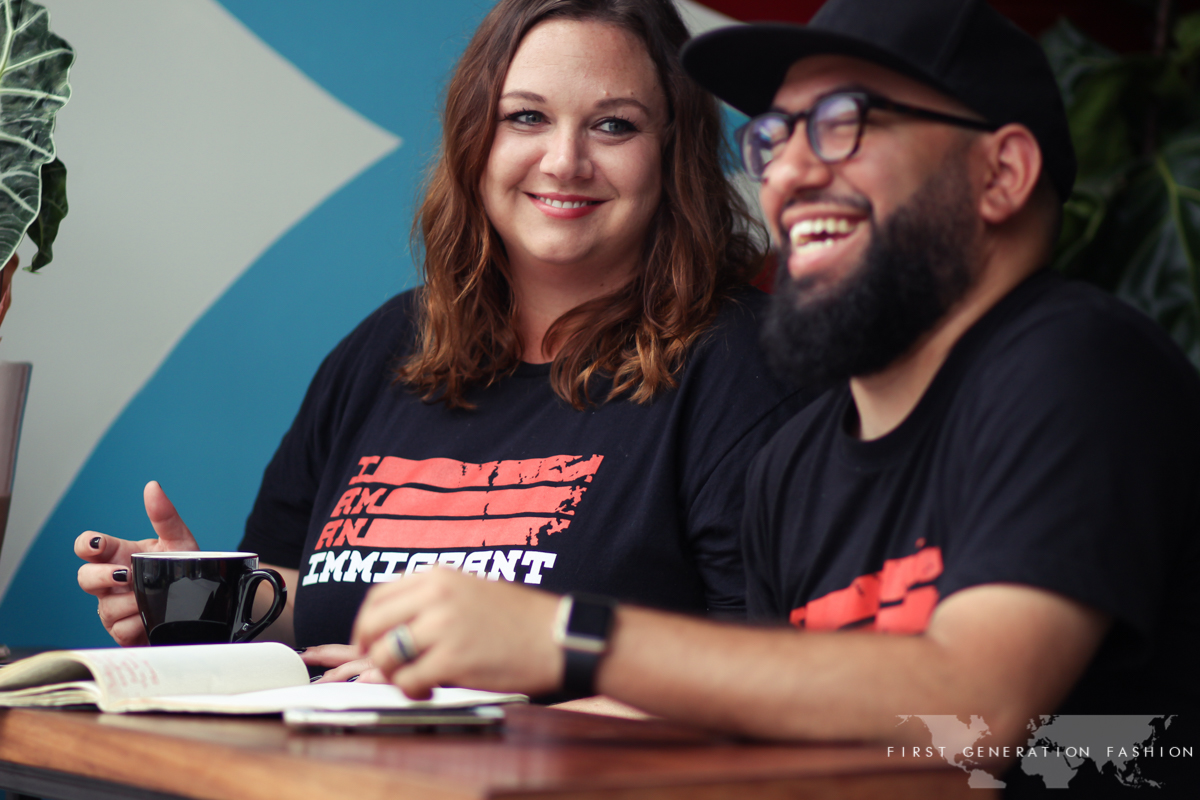
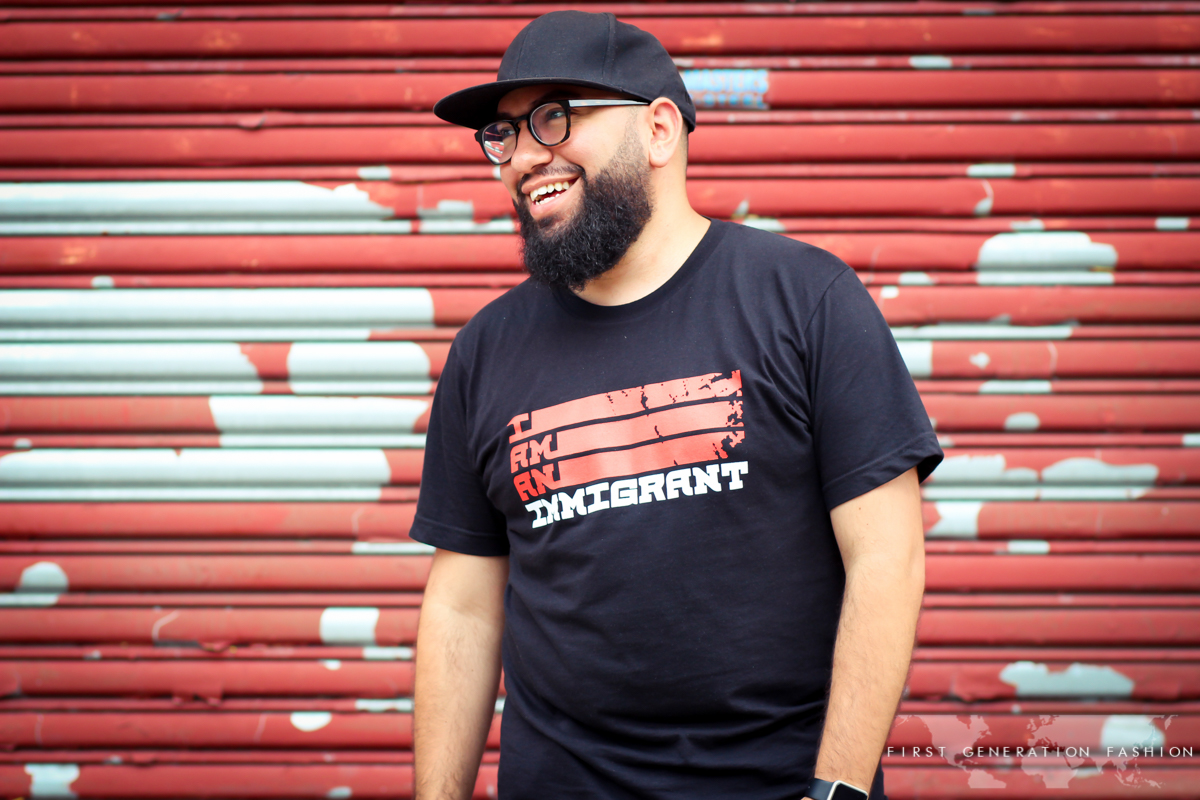
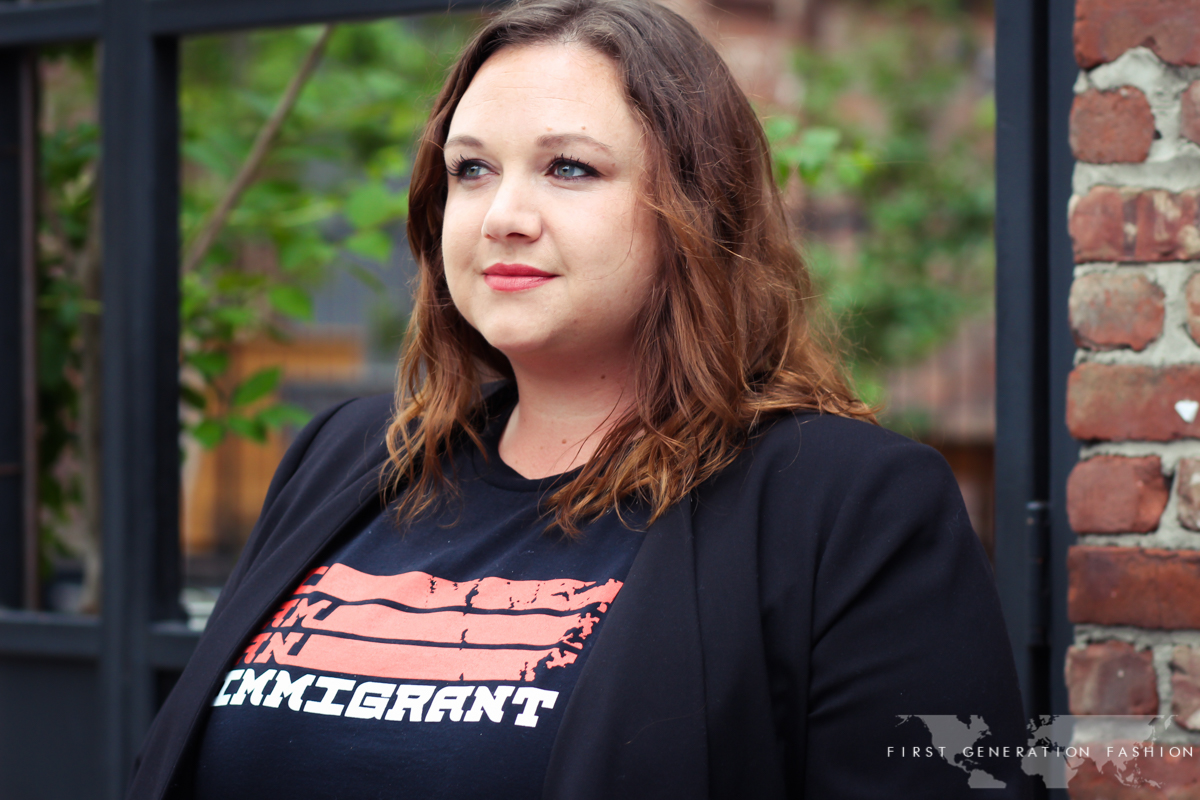
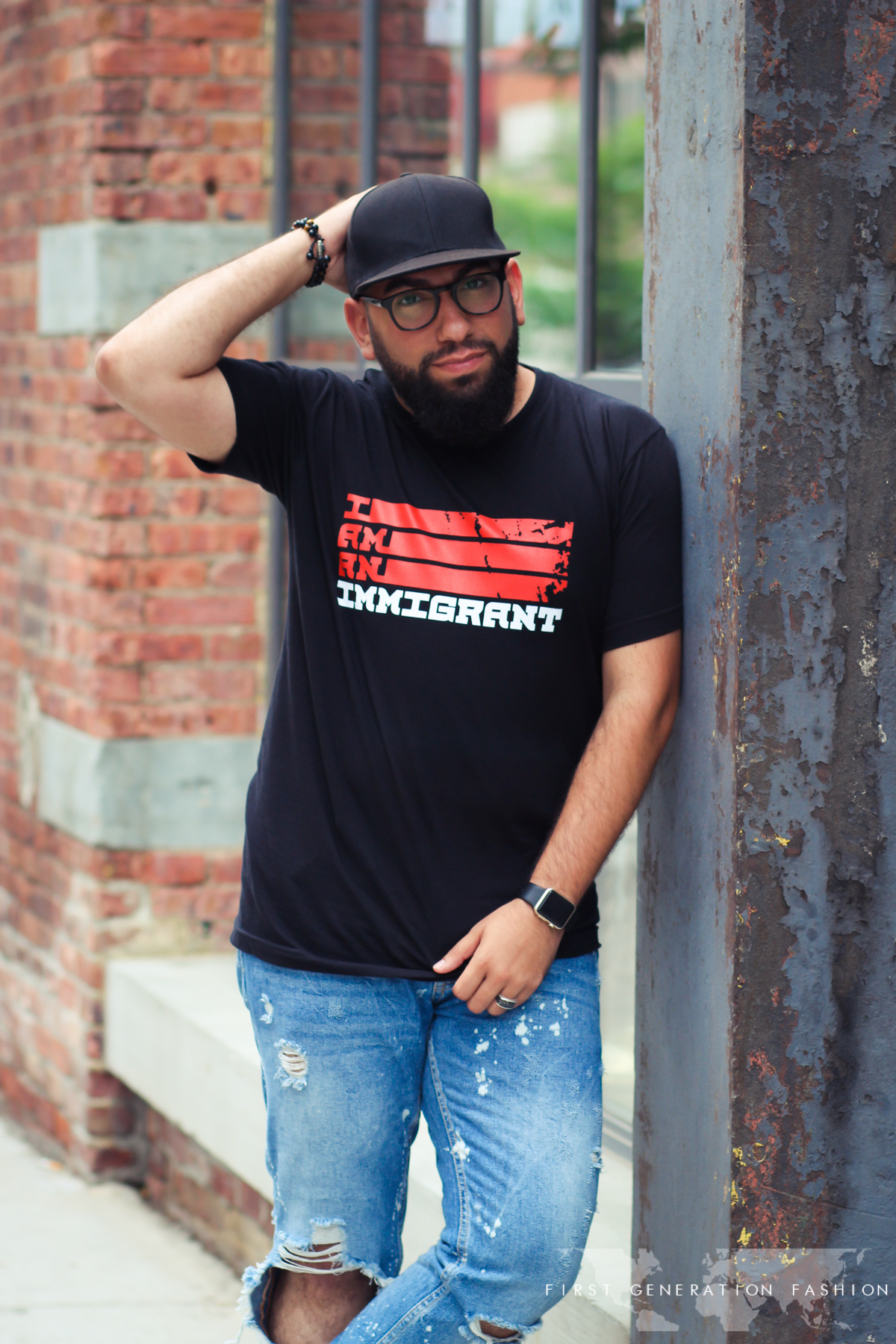
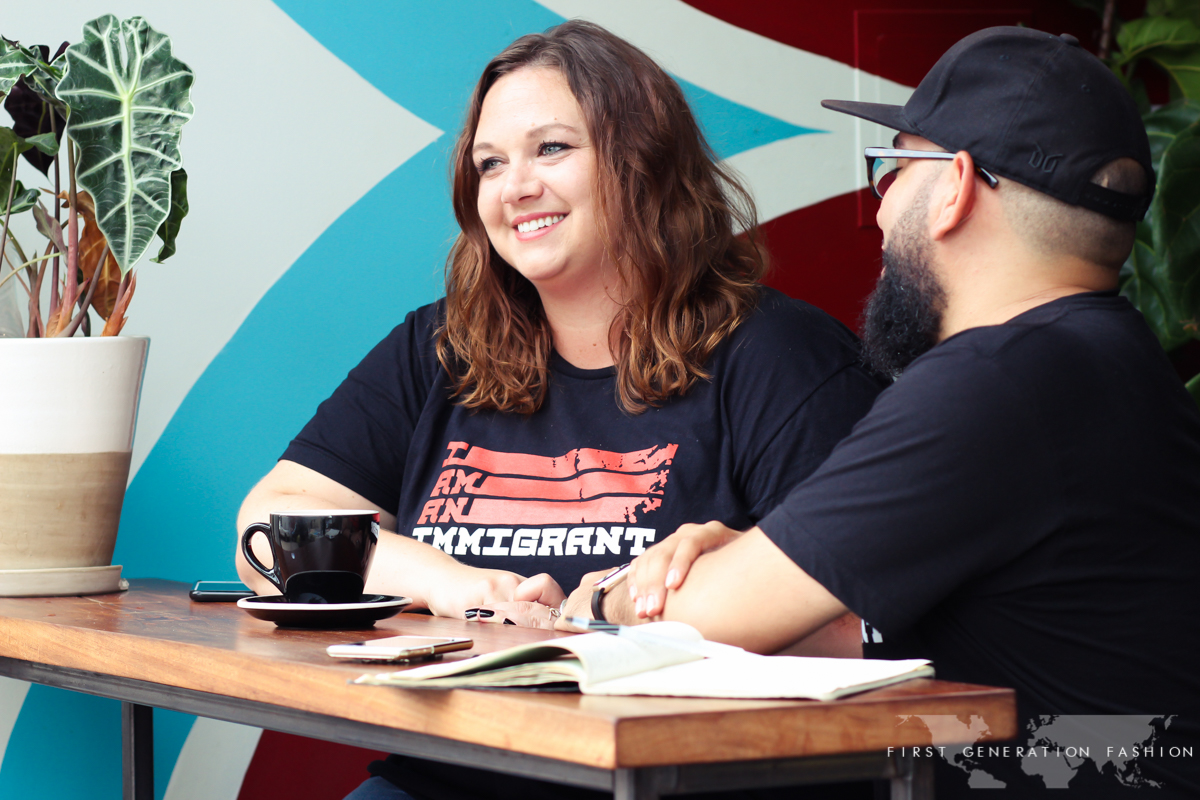

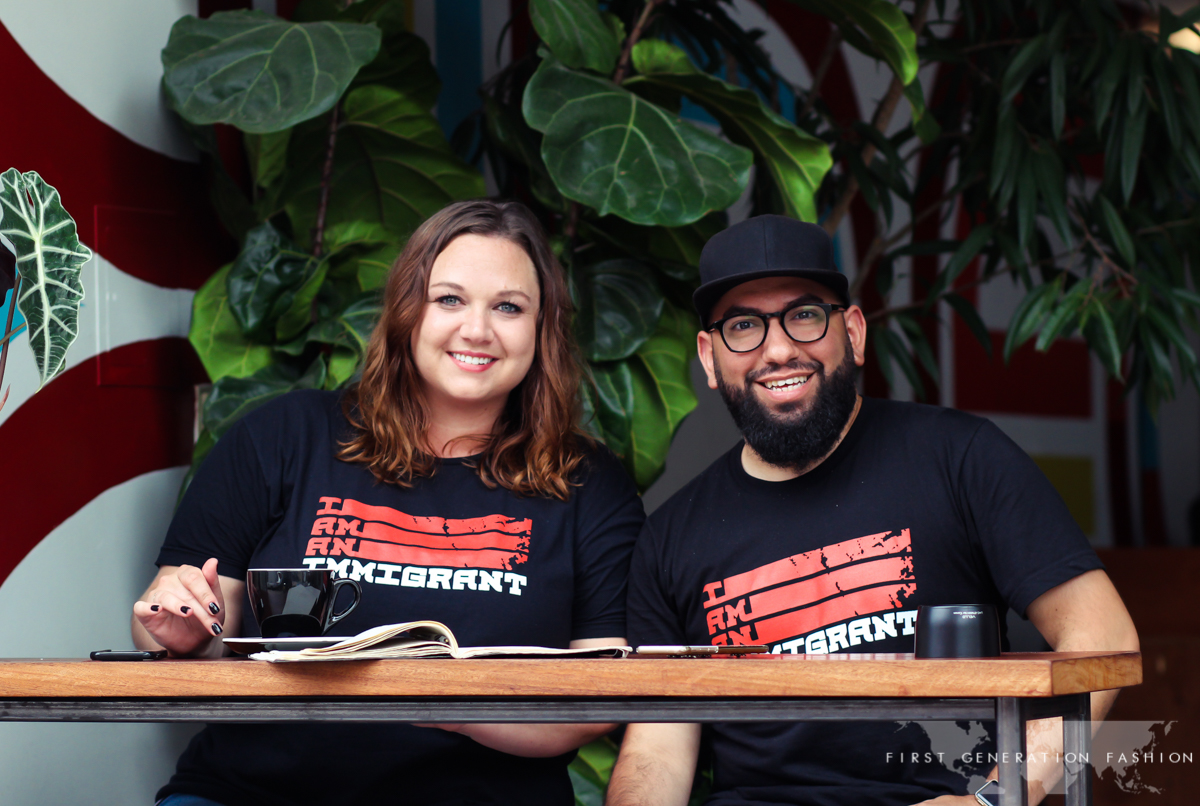
The United States is a nation fueled by immigrants from around the world. In honor of Immigrant Heritage Month, we sat down with Jen and Daniel from the non-profit organization FWD.us to discuss immigration reform, America’s undocumented community, and the #IAmAnImmigrant movement. Immigrant Heritage Month is a reminder to all Americans to embrace their welcome story and to stand in solidarity with new Americans. By celebrating our nation’s diversity and our shared American heritage, we move one step closer to policy reform that will benefit our nation as a whole.
Tell us about Immigrant Heritage Month.
DANIEL: June is Immigrant Heritage Month; it started as a way to celebrate our immigrants and create a campaign that acknowledges that the nation is impacted by immigrants. Our goal is to affect the national narrative while also fighting anti-immigration rhetoric.
How was Immigrant Heritage Month created?
JEN: Immigrant Heritage Month was created three years ago by Welcome.us, in partnership with FWD.us. It’s about the complete picture of America. There are 11 million undocumented immigrants in the US. FWD.us works on the entire issue from reforming our legal system, to securing our border, to clearing green card back logs. The entire system needs to be reformed. During Immigrant Heritage Month we focus on the cultural side, and promote that every American shares their “welcome story”.
Who created FWD.us, and when was it started?
JEN: FWD was founded three years ago by leaders in the technology community, such as Mark Zuckerberg and Reid Hoffman, to keep the American Dream achievable in the 21st century. We work to fix the immigration system that is fundamentally broken and outdated. America’s system prevents far too many talented immigrants from fully contributing to our communities and our economy.
What inspired Mark Zuckerberg to get involved with this issue?
JEN: Mark Zuckerberg was teaching an entrepreneurship class to high school students in East Menlo Park when he asked his class to raise their hands if they were planning on going to college. Most of the kids raised their hands, but one of his top students did not. When he asked him why he didn’t plan on going to college, the student said, “I’m not sure I can, I’m undocumented.” They were amazing kids, doing amazing things and that’s how Mark saw the problem first hand and decided to try to make a difference.
What motivates the tech community to get involved?
JEN: We’re losing the global race for talent. The US educates international students with very little option for them to stay. So we end up kicking them out to compete against us because there is no easy way for them to stay and create jobs in America. Our immigration system should encourage opportunity, not discourage success. There are thousands of tech jobs that go unfilled every year. We need an immigration system that reflects this – one that grows jobs and the economy and benefits talented immigrants just as much as it does native born American workers.
However, when you look at immigration reform and you have these big tech leaders involved, it’s not just about high skilled visas. Yes these big tech companies need to fill jobs that currently go unfilled, but it’s also about the families, the families of the workers, and the students.
How does Immigrant Heritage Month impact the national narrative surrounding immigrants.
DANIEL: A lot of people think of immigrants to be first-generation immigrants. Immigrant Heritage Month as a whole is convincing everyone, especially White Americans, that somewhere down the line, someone from your family had to come to this country. That’s one piece of the narrative.
JEN: The second piece is fighting the anti-immigrant narrative and the fact that the word immigrant is politicized. The word “immigrant” to any news agency automatically means policy and not culture.
Can you break down what it means to be undocumented?
DANIEL: I was undocumented for 19 years. I was actually undocumented when we kicked off the original Immigrant Heritage Month three years ago. I’m originally from Venezuela and moved to Miami when I was six years old, grew up in Orlando, and went to school in DC.
A lot of DREAMer young immigrants don’t find out until high school that they were undocumented. There are a lot of parents out there, that don’t tell their children until high school because they want to protect them. I was one of the top students at my high school and I was applying to colleges like Columbia University. It wasn’t until I needed my social security number to apply for FAFSA that my mom sat me down and told me that I was undocumented.
What happened next?
DANIEL: A sort of depression; I feel everyone goes through that. I had been here in America since I was six years old. You grow up not thinking that you’re not equal to the person sitting next to. For me, it was really hard to cope with the idea that I couldn’t go to school and be apart of society. I took off a year of school (I didn’t know at the time that you can go to school being undocumented), and did a lot of research and got accepted into a college that accepted undocumented students.
What type of programs are there for undocumented students?
DANIEL: Although undocumented students cannot receive federal aid, they can receive private aid, which of course is limited. I ended up going to school and was very fortunate to get the Jack Kent Cooke scholarship which is one of the largest scholarships available to undocumented students.
What is your response to those who challenge the rights of undocumented people in America?
DANIEL: I know people who have been in limbo for 21 years. My challenge to people who say “you have to do this the legal way, go get in line” is that the amount of time and money that people pay for legal help and fees is ridiculous. Visas expire and the system is created for rich people to come here. My family had the money at the time to apply and I was an applicant for residency for over 14 years. That was the legal way — waiting my time in line.
Why did it take so long?
DANIEL: It was a sibling-to-sibling petition which is the petition with some of the longest waiting times. My sister petitioned for my mom, and since daughter-to-mother petitions move faster, my mom had her green card when I was in high school. For me, It was over 14 years and I was doing everything the “right way” and it still wasn’t working because the system does not work. All you are told by the government is to go to the USCIS website to see your status.
So, you were stuck in limbo? How did you finally overcome being undocumented?
DANIEL: I actually ended up getting it another way. I had been with my partner for over two years and then three years ago, The Supreme Court came down with the decision that got rid of DOMA, (The Defense of Marriage Act), which in turn allowed same sex couples to petition for each other. This had never been allowed before. You still couldn’t get married everywhere because same sex marriage didn’t become possible until a year later. However, if you lived in a state where you could get married, then your partner could petition for you and so my husband petitioned for me.
What are some of the resources that undocumented people can use to get help?
DANIEL: United We Dream has the most resources for getting legal help. In New York City you have the New York Immigrant Coalition and Brooklyn Defenders. NYU also has an immigrant clinic. There are a lot of immigration clinics around the nation that offer help and eliminate legal fees.
What is the most impacting aspect of working on reform immigration?
DANIEL: I still consider myself privileged to be able to do the work that I do with FWD.us. We are close to the people who are impacted by these policies which helps drive the work that we do. You see the humanity of it all when the media has a way of taking humanity out of everything.
Let’s talk about the I Am An Immigrant campaign which brought together so many influential voices and celebrities to help celebrate Immigrant Heritage Month.
JEN: I Am An Immigrant is the first campaign for Immigrant Heritage Month that we have created. The idea is for I Am An Immigrant to be a solidarity movement with the hope that everyone will be wearing an I Am An Immigrant shirt.
Tell us about the intention and the message behind the campaign.
JEN: Part of our work is de-politicizing the word “immigrant”. June is the one month that rather than hammering on the political system (we are a bipartisan organization so we work with Republicans and Democrats), we are able to reach out to different organizations and allies who would not usually get involved with immigration reform.
We want to spread the idea that America is built by immigrants. This is a celebratory month and the campaign allows people to attach to the movement and say, “yes I am an immigrant, I have first generation immigrant employees, or I have third generation immigrant employees.”
How does America’s current political environment affect your mission and campaign?
JEN: We hope that more people are getting involved because they recognize what’s happening. It’s perfect timing because of the presidential campaign and there’s a nominee that is so anti-immigrant. This campaign is an easy way for people to get involved and show that they don’t stand for this negative rhetoric or narrative; it’s a celebration.
Have the American people reacted?
JEN: Three out of four Americans support passing meaningful immigration reform, they agree it’s a moral and economic necessity. This is not a partisan issue, they want to solve this problem.
What exactly defines immigration reform?
JEN: Immigration reform addresses borders, legal issues, dealing with the undocumented community, and creating a pathway to citizenship. Immigration reform fights for the fact that we are not going to deport 11 million people and displace them from this country. We call that mass deportation. That would be terrifying to this country.
Can you describe mass deportation; why is it terrifying?
JEN: Mass deportation means the US would be a police state. There would be an internal security force that would go door-to-door, to schools, hospitals and churches to find people that are undocumented and tear them away from their families. These are places where people feel safe. This would create terror. And to top it off, the cost is astronomical.
By using the adjective “terror” you’ve painted a vivid picture that we’ve never really thought about when describing immigration reform. Why do you think so many Americans fail to identify mass deportation in the way that you describe it?
JEN: I think it’s hard to imagine what this really looks like. Mass deportation is forcibly removing 11 million undocumented people from the United States. However, 40% of the undocumented population came here legally. People don’t realize this.
And they’re just in limbo?
JEN: Many of them have overstayed visas, and the US doesn’t have an internal tracking system. This happens for a ton of reasons. They have family here, have lived here for so long, have roots here, and are American in every sense of the word except for the document.
How is FWD and Welcome making an impact?
JEN: FWD.Us is a 501(c)(4) – It’s a nonprofit and the (c)(4) part of it means that they we can advocate for an issue. FWD is a bipartisan organization, we work with lawmakers from both sides of the isle to keep the pressure on them to fix our broken immigration system.
Welcome.US is a (c)(3) and is the sister of FWD. A (c)(3) does not allow you to do any direct advocacy. Since 2014, Welcome has coordinated Immigrant Heritage Month every June. Immigrant Heritage Month and the #IAmAnImmigrant campaign are a collaboration between artists and entertainers, elected officials, community organizations and American families in honor of immigrants’ shared American heritage.
What are some of the challenges you face with spreading the message?
DANIEL: At the end of the day, it’s policy. If immigration wasn’t talked about so much on the news, I think it might be easier to spread our message. People might react differently and think, ok cool, let’s talk about immigration. But if the American people don’t know about the politics, it’s hard for them to put themselves out there on Twitter or Facebook to say, “I stand in solidarity with this movement.”
We live in a world where you have to defend your stance. As soon as you say something, someone will question it and ask, “do you know about this policy, or this policy?” We live in a country that has become so politicized that Americans might be scared of being challenged or not having access to information because media will portray it in a different way.
Let’s talk about some of the most recent challenges the United States has faced regarding policy. What happened in June with the Supreme Court ruling for United States v. Texas?
JEN: This past month The Supreme Court issued a ruling for the US v. Texas. In 2014, President Obama issued executive orders that would 1: expand the Deferred Action for Childhood Arrivals program (DACA) to include people that did not qualify for it because of an age gap and 2: protect the parents of American citizens which is called Deferred Action for Parents of Americans (DAPA). In 2014, Texas sued the government saying that the President has no legal authority to do this and wanted to put an injunction on his executive orders to halt the program.
On April 18th, 2016 The Supreme Court heard the case. It took a year and a half for it to get to them. In June 2016, The Supreme Court came out with a 4-4 split decision on this case, which means that they made no decision and it was to go back to the lower court. That’s a devastating loss for us and means that relief for millions of American families with an undocumented family member remains out of reach.
Why is DACA and DAPA important?
JEN: In total, approximately 5 million people with millions more family members would have been able to come out of the shadows, and after passing a background check, gain authorization to work and a piece of paper that says they no longer have to live under the daily threat of deportation. It’s not legalization, and it’s not a legislative solution. It is a bandaid to the system that would help now. It would de-prioritize deportation. It would make sure that parents of American citizens are not prioritized so that they wouldn’t get deported over something like getting pulled over for a broken tail light.
We lost the case. It was a huge loss for us personally. I have three staffers whose parents would have benefited from DAPA. It was an emotional roller coaster.
What happens now?
JEN: The injunction stands as of now. The program cannot be implemented. There are a couple of other things that the government can do. They can try to re-hear the case when there is a ninth Supreme Court Justice, because we are currently down one (that’s why there was a tie).
Even in today’s political climate, Republicans can decide that they don’t want to fill the Supreme Court because they want to wait for the next President. That’s how politicized this is.
Now that Immigrant Heritage Month has come to a close, what are some of your goals moving forward regarding immigration reform?
JEN: The Court’s ruling is a setback for millions of American families, but we will continue to push Congress to pass legislation in 2017 that will allow 11 million people to come out of the shadows and participate in our society in a meaningful way. The costs of inaction are astronomical – we simply cannot afford to delay. We’re going to do everything we can to pressure Congress.
When we started this interview, we began with discussing how immigration reform would benefit the tech community. Many international students and workers in the US are victims to our system’s “bait and switch” visa process. Without a pathway to citizenship, Silicon Valley and the US as a whole, is suffering from a brain drain. What other benefits is America losing out on by not allowing these 11 million or even 5 million people to proceed through the process of legalization?
DANIEL: We’ve had this conversation over and over again, and we always have to talk about how much more money we would gain; it’s always economic. Let’s consider what would actually deporting 11 million people look like. There’s a piece of me that always says, “forget economics, this is just about humanity.”
Immigration reform is about being human and about what it means to be the United States of America. The US goes into other countries to fix their problems, but is not even willing to internally recognize that there is a crisis happening here? In the US, we have millions of people who are living in limbo. Some Americans challenge the idea and say, “well, you can go back to your country.” The reality is that many undocumented people come from corrupt countries. We need to face what that would actually look like if we were to send people home. For me, it’s about the humanity of it. Forget economics, these people belong here.
JEN: They currently they live in the shadows.
DANIEL: We are human.
For more of First Gen subscribe today
